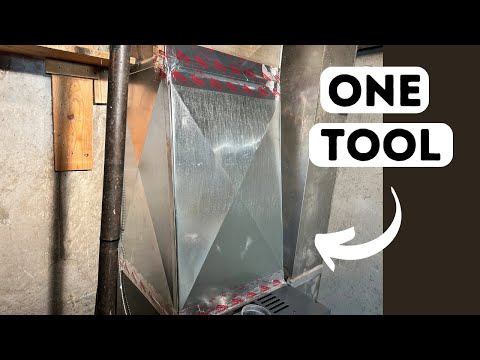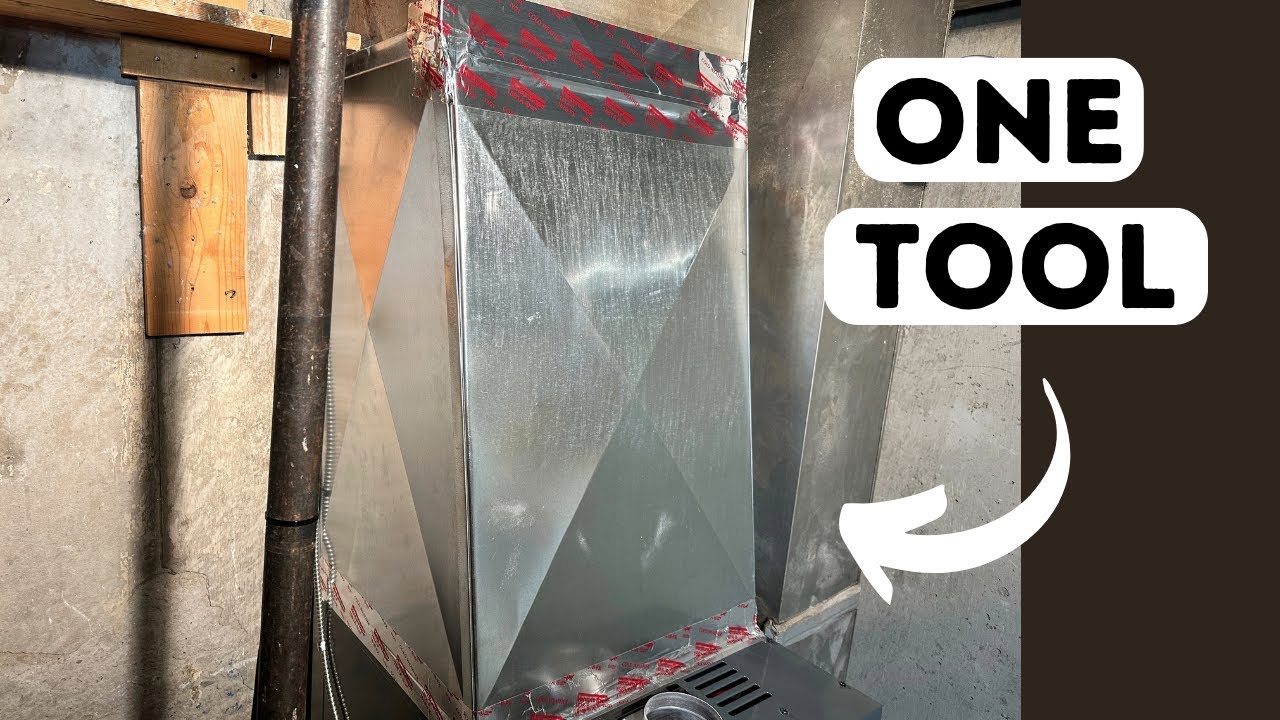Ductwork fabrication is an essential aspect of HVAC systems that often goes unnoticed. With precision and expertise, skilled fabricators meticulously design and create ducts that ensure optimal airflow and temperature control in commercial and residential spaces. Imagine a smoothly functioning HVAC system that effortlessly circulates warm or cool air throughout your home or workplace, creating a comfortable environment regardless of the season. Ductwork fabrication plays a crucial role in achieving this seamless operation. By employing advanced techniques and state-of-the-art equipment, ductwork fabricators bring your HVAC system to life. These professionals meticulously measure, cut, and assemble ducts, ensuring a perfect fit and minimal air leakage. With their attention to detail, they optimize the efficiency of your HVAC system, reducing energy consumption and saving you money in the long run. Whether you’re constructing a new building or upgrading an existing one, investing in high-quality ductwork fabrication is a wise decision. So, next time you feel a gentle breeze flowing from your vents or enjoy a perfectly climate-controlled environment, remember the unsung heroes behind the scenes – the skilled fabricators who have transformed your HVAC system into a masterpiece of comfort and efficiency.

The Importance of Ductwork Fabrication
When it comes to HVAC systems, one crucial aspect that often goes unnoticed is ductwork fabrication. It plays a vital role in ensuring proper airflow and efficient distribution of heated or cooled air throughout a building. In this article, we will explore the importance of ductwork fabrication and how it impacts the overall performance of HVAC systems.
1. Efficient Airflow
Ductwork fabrication involves the precise design and construction of ducts that transport air from the HVAC unit to various rooms or areas within a building. Properly fabricated ductwork ensures efficient airflow, preventing air leakage or obstruction that can reduce the system’s effectiveness. It allows for the even distribution of air, maintaining consistent temperatures throughout a building.
A well-designed ductwork system minimizes pressure drops, which can result in reduced airflow and strain on the HVAC unit. By optimizing the duct layout and ensuring proper sizing, ductwork fabrication maximizes the system’s overall efficiency and performance.
2. Improved Energy Efficiency
Efficiency is a key consideration for any HVAC system. Poorly fabricated ductwork can lead to significant energy losses, resulting in higher utility bills. By implementing proper ductwork fabrication techniques, these energy losses can be minimized, leading to improved energy efficiency.
Energy-efficient ductwork fabrication involves adequate insulation, sealing, and utilization of materials with low thermal conductivity. Properly insulated ducts prevent heat transfer, ensuring that heated or cooled air remains at the desired temperature throughout its journey from the HVAC unit to the different areas of a building.
3. Enhanced Indoor Air Quality
Another crucial aspect of ductwork fabrication is maintaining optimal indoor air quality. Inefficient ductwork can become a breeding ground for mold, dust, and other contaminants, which can be harmful to occupants’ health. Proper fabrication techniques, such as sealing joints and using high-quality materials, help prevent air leaks and minimize the entry of pollutants.
Additionally, regular maintenance and cleaning of ductwork are essential to ensure optimal indoor air quality. Properly fabricated ducts make cleaning and maintenance more accessible, reducing the risk of contaminants accumulating within the system.
4. Noise Reduction
Noise pollution is a common concern in HVAC systems. Poorly fabricated ductwork can contribute to excessive noise levels, causing discomfort and distractions in the building. By implementing proper ductwork fabrication techniques, noise levels can be significantly reduced.
Properly insulated ducts, along with careful design and installation, help dampen sound transmission, ensuring a quieter environment. By considering noise reduction during the fabrication process, occupants can enjoy a more peaceful and productive atmosphere.
5. Customization and Adaptability
Ductwork fabrication allows for customization and adaptability to meet specific building requirements. Each structure is unique, and the ductwork needs to be designed accordingly. Proper fabrication techniques enable the creation of ducts that fit seamlessly within the available space and accommodate any architectural constraints.
Additionally, ductwork fabrication allows for easier modifications or expansions in the future. As building needs change, the ductwork system can be easily adapted to accommodate new areas or equipment without major disruptions or costly renovations.
Conclusion
Proper ductwork fabrication is essential for the optimal performance of HVAC systems. It ensures efficient airflow, improves energy efficiency, enhances indoor air quality, reduces noise levels, and allows for customization and adaptability. By investing in high-quality ductwork fabrication, building owners can enjoy the benefits of a well-functioning HVAC system that provides comfort, energy savings, and a healthy indoor environment.
Crafting Perfect Sheet Metal Ductwork Transitions: A DIY HVAC Guide
Video Source : The DIY HVAC Guy
Ductwork Fabrication
Ductwork Fabrication
| Component | Description | Material | Size | Benefits |
|---|---|---|---|---|
| Duct Elbows | Duct elbows are essential components used to change the direction of airflow within a duct system. They are designed to minimize pressure drops and turbulence, ensuring efficient airflow. | Galvanized Steel | Various sizes available | Smooth airflow transition, reduced energy consumption, and improved system performance. |
| Duct Transitions | Duct transitions are used to connect ducts of different sizes or shapes, allowing for seamless airflow transition between different sections of the ductwork system. They ensure minimal pressure losses and enable smooth airflow. | Galvanized Steel | Customizable | Efficient airflow transition, reduced noise, and enhanced system performance. |
| Dampers | Dampers are adjustable devices inserted into ductwork to control the airflow. They regulate the volume and direction of air, allowing for precise control of heating, ventilation, and air conditioning systems. | Galvanized Steel, Aluminum, or Stainless Steel | Various sizes available | Optimized airflow control, energy efficiency, and improved indoor air quality. |
| Duct Insulation | Duct insulation is an integral part of ductwork fabrication, as it helps prevent heat loss or gain during the distribution of conditioned air. It enhances energy efficiency and reduces thermal losses, ensuring optimal performance. | Fiberglass, Foam, or Reflective Insulation | Customizable | Improved energy efficiency, reduced energy costs, and enhanced thermal comfort. |
| Flexible Ducts | Flexible ducts are used in applications that require easy installation around obstacles or tight spaces. They provide flexibility in routing airflow and are commonly used in residential HVAC systems. | Polyethylene Inner Core with Outer Jacket | Various sizes available | Ease of installation, versatility, and adaptability to challenging installation scenarios. |
This table provides an overview of various components used in ductwork fabrication. Each component plays a crucial role in ensuring efficient airflow, energy savings, and optimal system performance. Galvanized steel is a commonly used material due to its durability, corrosion resistance, and cost-effectiveness. However, other materials like aluminum and stainless steel find application in specific scenarios requiring higher performance standards.
Duct elbows enable smooth airflow direction changes, minimizing pressure drops and turbulence. They contribute to energy savings and improved system efficiency. Duct transitions facilitate seamless airflow transition between ducts of different sizes or shapes, ensuring efficient performance and reducing noise levels.
Dampers offer precise control over airflow volume and direction, enabling optimized temperature and air distribution. They play a vital role in achieving energy efficiency, indoor comfort, and maintaining desired air quality standards. Duct insulation is essential for minimizing thermal losses during air distribution. Fiberglass, foam, or reflective insulation materials are commonly used for their insulation properties and ability to prevent heat gain or loss.
Flexible ducts provide flexibility in routing airflow around obstacles or tight spaces, making them ideal for residential HVAC systems. Their ease of installation and adaptability contribute to their widespread use. Overall, these components ensure a well-designed and properly fabricated ductwork system, enhancing efficiency, comfort, and cost-effectiveness.

